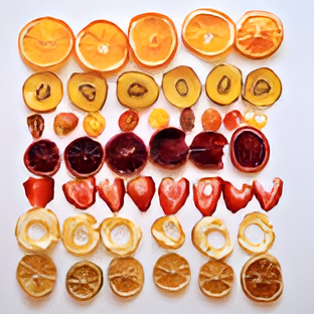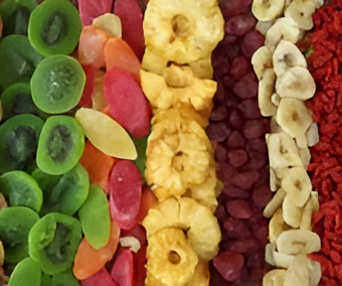Dehydrated Fruits: A Comprehensive Guide

Dehydrated fruits have gained popularity in recent years as a convenient, nutritious, and versatile snack option. They are made by removing the moisture from fresh fruits, which helps to preserve their flavors, colors, and nutritional content. This process not only extends the shelf life of the fruits but also enhances their sweetness and chewiness, making them an appealing choice for many. In this guide, we will explore the benefits, methods of dehydration, popular varieties, culinary uses, and tips for selecting and storing dehydrated fruits.
Benefits of Dehydrated Fruits
- Nutritional Value: Dehydrated fruits retain most of their essential vitamins and minerals. They are rich in dietary fiber, antioxidants, and various phytochemicals. For instance, dried apricots are an excellent source of vitamin A, while raisins provide iron and potassium.
- Convenience: Dehydrated fruits are lightweight and easy to store, making them an ideal snack for on-the-go lifestyles. They don’t require refrigeration, which makes them perfect for camping, hiking, or traveling.
- Long Shelf Life: When stored properly, dehydrated fruits can last for months or even years. This makes them a great pantry staple, allowing you to enjoy seasonal fruits year-round.
- Versatility: Dehydrated fruits can be used in a variety of culinary applications. They can be added to baked goods, salads, cereals, trail mixes, or eaten as a standalone snack.
- Natural Sweetness: The dehydration process concentrates the sugars in fruits, resulting in a sweeter flavor profile. This can satisfy sweet cravings without the need for added sugars.
Methods of Dehydration
Dehydrating fruits can be achieved through various methods, each with its advantages:
- Air Drying: This traditional method involves hanging fruits in a warm, dry place with good airflow. It’s simple and doesn’t require special equipment, but it can take a long time and may not produce consistent results.
- Sun Drying: Ideal for hot, dry climates, sun drying involves placing fruits in direct sunlight. While this method can enhance flavors, it requires careful monitoring to prevent spoilage or contamination from insects.
- Oven Drying: Using a conventional oven is a popular method for dehydrating fruits at home. Fruits are sliced thinly, placed on baking sheets, and dried at a low temperature for several hours. This method is faster than air or sun drying but can consume more energy.
- Dehydrator: A food dehydrator is a specialized appliance designed for drying fruits and vegetables. It provides a controlled environment with consistent temperature and airflow, leading to optimal drying results.
- Freeze Drying: This advanced technique involves freezing the fruit and then reducing the pressure to allow the ice to sublimate directly into vapor. Freeze-dried fruits retain their original shape, color, and flavor, making them visually appealing and delicious.

Popular Varieties of Dehydrated Fruits
- Apples: Dried apple slices are a classic snack, often enjoyed as is or used in recipes. They are high in fiber and provide a sweet, tangy flavor.
- Bananas: Banana chips are a crunchy and satisfying treat. They are high in potassium and can be found both sweetened and unsweetened.
- Mangoes: Dried mango is a tropical favorite, offering a rich sweetness and chewy texture. They are great for snacking or adding to trail mixes.
- Pineapple: Dried pineapple is a burst of tropical flavor, often used in baking or as a topping for yogurt and salads.
- Berries: Blueberries, strawberries, and raspberries can be dried to intensify their sweetness and are excellent additions to cereals, oatmeal, or smoothies.
- Cherries: Dried cherries have a tart-sweet flavor that works well in both sweet and savory dishes, including salads and baked goods.
- Peaches and Apricots: These stone fruits offer a delightful sweetness when dried, making them a popular choice for snacking and cooking.
Culinary Uses
Dehydrated fruits are incredibly versatile and can be incorporated into numerous dishes:
- Baking: Add dried fruits to muffins, breads, and cakes for added flavor and texture. They can also be used in granola bars and energy bites.
- Snacking: Enjoy dehydrated fruits on their own, or mix them with nuts and seeds for a nutritious trail mix.
- Salads: Sprinkle dried fruits like cranberries or raisins on salads to add a sweet and chewy contrast to greens.
- Breakfast: Rehydrate fruits by soaking them in water or juice and adding them to oatmeal, yogurt, or smoothies for a nutritious breakfast.
- Savory Dishes: Use dried fruits in savory dishes, such as tagines or grain salads, to add depth and sweetness.
Tips for Selecting and Storing Dehydrated Fruits
- Choose Quality: When buying dehydrated fruits, look for products without added sugars, preservatives, or artificial flavors. Organic options are often more wholesome.
- Check for Moisture: Dehydrated fruits should be dry to the touch and free from excess moisture. Any signs of moisture can indicate spoilage or potential mold growth.
- Storage: Store dehydrated fruits in airtight containers in a cool, dark place. Vacuum sealing can further extend their shelf life.
- Rehydration: If you plan to use dehydrated fruits in cooking, consider soaking them in water or juice for a few hours before use to restore some of their original texture.
- Expiration Dates: While dehydrated fruits have a long shelf life, always check the expiration date and use them before they lose their flavor and nutritional benefits.
Dehydrated fruits are a delightful addition to any diet, offering a combination of convenience, flavor, and nutrition. Whether you choose to buy them or make your own, these versatile snacks can enhance your meals and satisfy your cravings. With a wide variety of options available and countless culinary applications, dehydrated fruits are a perfect way to enjoy the essence of fruits throughout the year. Embrace the goodness of dehydrated fruits and discover how they can enrich your snacking and cooking experiences!